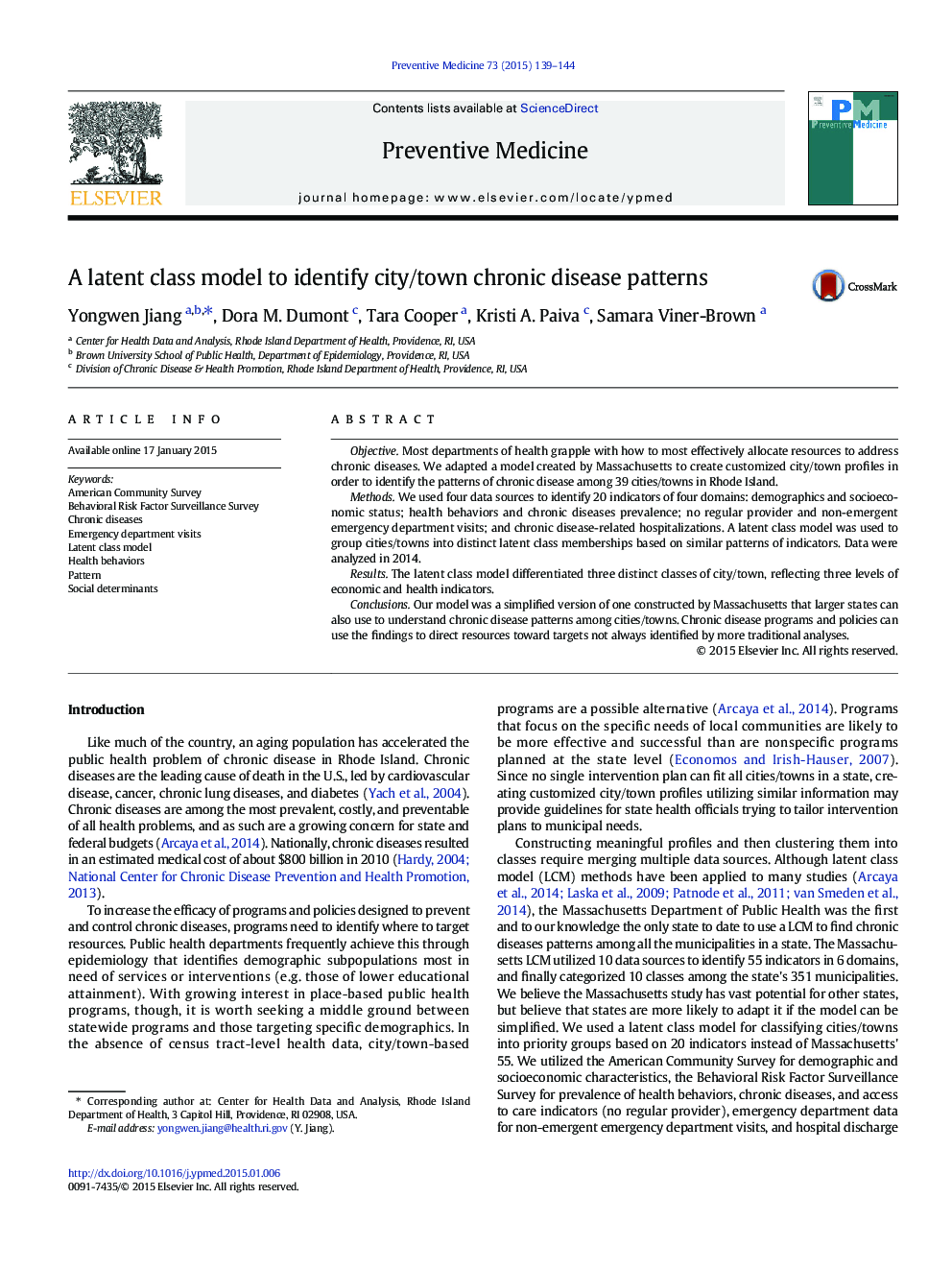| Article ID | Journal | Published Year | Pages | File Type |
|---|---|---|---|---|
| 6046585 | Preventive Medicine | 2015 | 6 Pages |
â¢Arcaya et al. has used a latent class model to find chronic diseases patterns in MA.â¢This provides a new way to help departments of health allocate resources.â¢Our study simplifies the data sources and indicators of MA's latent class model.â¢Our model can be readily adapted to larger states to identify target populations.
ObjectiveMost departments of health grapple with how to most effectively allocate resources to address chronic diseases. We adapted a model created by Massachusetts to create customized city/town profiles in order to identify the patterns of chronic disease among 39 cities/towns in Rhode Island.MethodsWe used four data sources to identify 20 indicators of four domains: demographics and socioeconomic status; health behaviors and chronic diseases prevalence; no regular provider and non-emergent emergency department visits; and chronic disease-related hospitalizations. A latent class model was used to group cities/towns into distinct latent class memberships based on similar patterns of indicators. Data were analyzed in 2014.ResultsThe latent class model differentiated three distinct classes of city/town, reflecting three levels of economic and health indicators.ConclusionsOur model was a simplified version of one constructed by Massachusetts that larger states can also use to understand chronic disease patterns among cities/towns. Chronic disease programs and policies can use the findings to direct resources toward targets not always identified by more traditional analyses.
